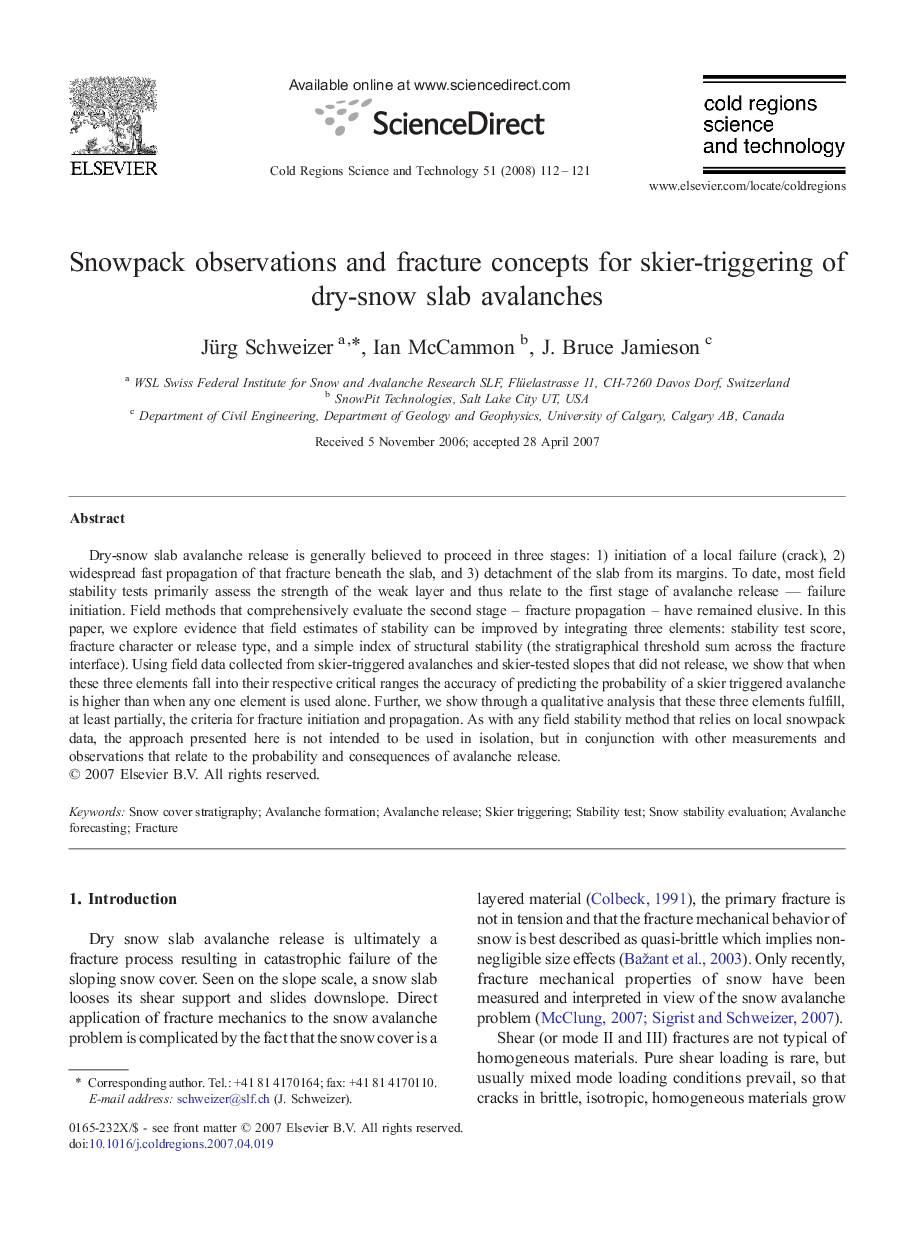| Article ID | Journal | Published Year | Pages | File Type |
|---|---|---|---|---|
| 4676565 | Cold Regions Science and Technology | 2008 | 10 Pages |
Dry-snow slab avalanche release is generally believed to proceed in three stages: 1) initiation of a local failure (crack), 2) widespread fast propagation of that fracture beneath the slab, and 3) detachment of the slab from its margins. To date, most field stability tests primarily assess the strength of the weak layer and thus relate to the first stage of avalanche release — failure initiation. Field methods that comprehensively evaluate the second stage – fracture propagation – have remained elusive. In this paper, we explore evidence that field estimates of stability can be improved by integrating three elements: stability test score, fracture character or release type, and a simple index of structural stability (the stratigraphical threshold sum across the fracture interface). Using field data collected from skier-triggered avalanches and skier-tested slopes that did not release, we show that when these three elements fall into their respective critical ranges the accuracy of predicting the probability of a skier triggered avalanche is higher than when any one element is used alone. Further, we show through a qualitative analysis that these three elements fulfill, at least partially, the criteria for fracture initiation and propagation. As with any field stability method that relies on local snowpack data, the approach presented here is not intended to be used in isolation, but in conjunction with other measurements and observations that relate to the probability and consequences of avalanche release.
